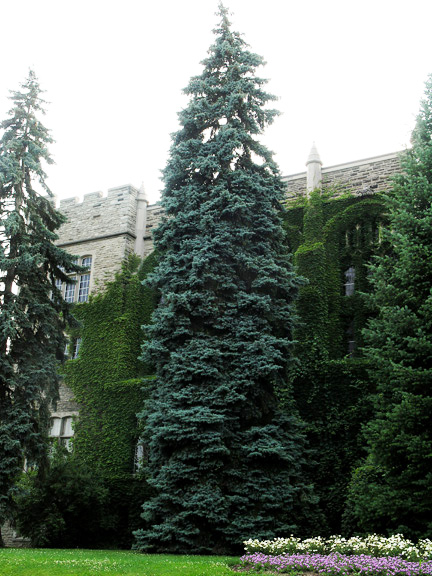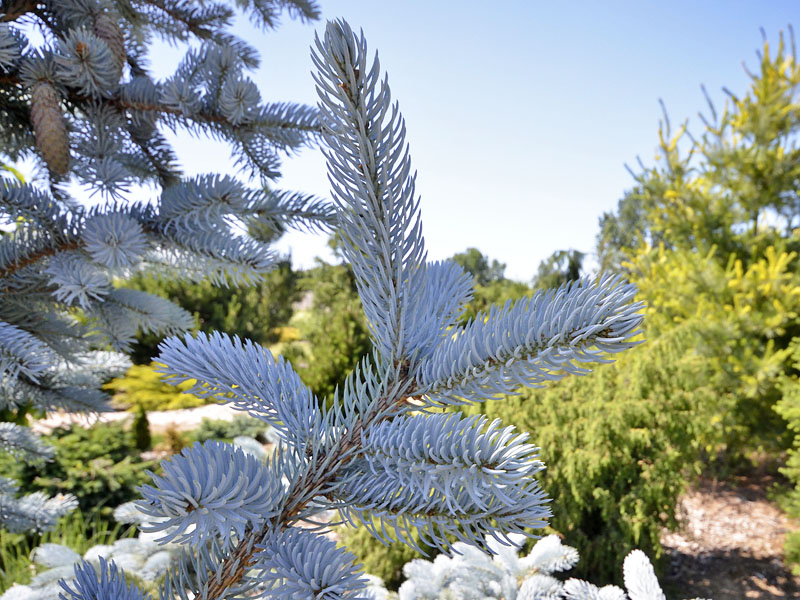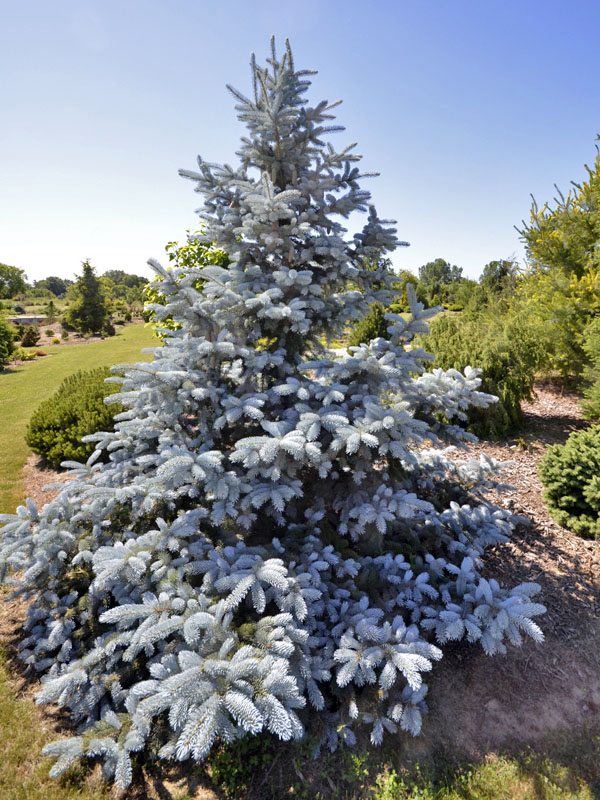
Woody > Picea > Picea pungens > Picea pungens 'Hoopsii'
Picea pungens
'Hoopsii'
Hoopsii Blue Spruce
Origin: Introduced in the 1950's.
Mike's
Opinion


"
A popular plant that is still in demand because of its intense blue colour. Narrow, almost columnar form see this plant planted close to buildings. An excellent plant for large landscapes.
Michael Pascoe, NDP., ODH., CLT., MSc. (Plant Conservation)
"
| Family |
| Pinaceae |
| Genus |
| Picea |
| Species |
| pungens |
| Cultivar |
| 'Hoopsii' |
| Category |
| Woody |
| Type |
| Tree (evergreen) |
| Pronunciation |
| USDA Hardiness Zone |
| 1a - 6a |
| Canadian Hardiness Zone |
| 0a - 5b |
| RHS Hardiness Zone |
| H7 |
| Temperature (°C) |
| -51 - (-21) |
| Temperature (°F) |
| -60 - (-5) |
| Height |
| 2.5 - 4 m |
| Spread |
| 1 - 1.5 m |
Photographs
Description and Growing Information
Flowering Period
| General Description |
| A clonally propagated, narrow formed blue spruce, with a very regular and consistent habit. Stiff blue needles are typical of the species. |
| Landscape |
| Great effect is created if planted in large groups, especially near large, stately buildings. Hoopsii Blue Spruce is a dense evergreen tree with a strong central leader and a distinctive and refined pyramidal form. Its average texture blends into the landscape, but can be balanced by one or two finer or coarser trees or shrubs for an effective composition. |
| Cultivation |
| This tree should only be grown in full sunlight. It is very adaptable to both dry and moist growing conditions, but will not tolerate any standing water. It is not particular as to soil type or pH, and is able to handle salt. It is highly tolerant of urban pollution and will even thrive in inner city environments. |
| Shape |
| Medium to large, narrow, pyramidal conifer with horizontal branching to the ground. |
| Growth |
| Slow |
| ID Characteristic |
| A narrow formed, yet intense blue spruce, distinguishing itself from other similar cultivars because of its almost fastigiate form. Stiff, bristly, four-angled, green to blue-green to silver-blue needles (to 3.5 cm long) point outward from the branches in all directions. It typically grows 10-30 m tall in cultivation. |
| Pests |
| Northern pine weevil - This insect seldom bothers landscape plants since there is very little breeding material left around. The adult chews small holes in the bark of small twigs and branches. Bark may fall away in the chewed areas. |
| Habitat |
| Horticultural origin. |
| Bark/Stem Description |
| Greyish brown colour, plates forming block like shapes. |
| Leaf Description |
| Needles reguarly arranged around the twig, 2-3 cm inches in length, stiff, and sharply pointed; colour blue-green to blue with white lines; needles diamond-shaped in cross-section. |
| Flower Description |
| Neither the flowers nor the fruit are ornamentally significant. |
| Fruit Description |
| Cones 6.25-10 cm long, cylindrical-elongate, and light brown when mature; cone scales long, thin, and flexible; apices of cone scales pointed and irregularly toothed. |
| Colour Description |
| The bluish colour of the needles, and the heavy scaling of the bark are characteristic of the species. |
| Texture Description |
| Medium |
| Notable Specimens |
| The University of Western Ontario, London, Ontario, Canada. Whistling Gardens, Wilsonville, Ontario, Canada. |
| Propagation |
| Clones are grafted during winter. |



